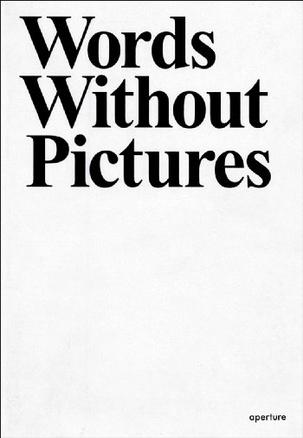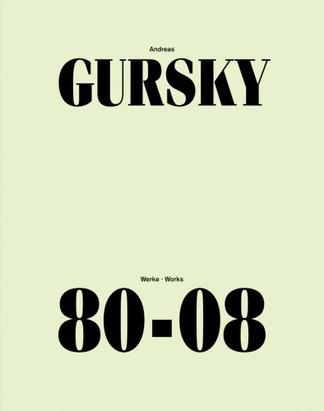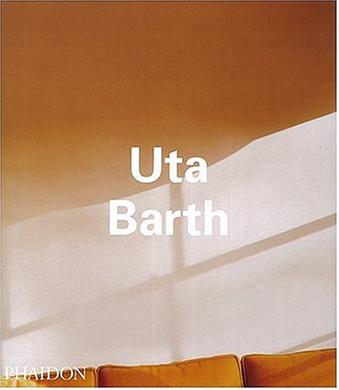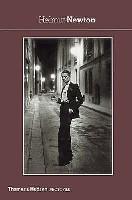-

Words Without Pictures
Words Without Pictures was originally conceived by curator Charlotte Cotton as a means of creating spaces for discourse around current issues in photography. Every month for a year, beginning in November 2007, an artist, educator, critic or curator was invited to contribute a short unillustrated essay about an aspect of emerging photography. Each piece was available on the Words Without Pictures website for one month and was accompanied by a discussion forum focused on its specific topic. Over the course of its month-long "life," each essay received both invited and unsolicited responses from a wide range of interested parties. All of these essays, responses and other provocations are gathered together here. Previously issued as a print-on-demand title, we are pleased to present Words Without Pictures to the trade for the first time as part of the Aperture Ideas series. The contributors are Amy Adler, George Baker, Christopher Bedford, Walead Beshty, Sarah Charlesworth, Charlotte Cotton, John Divola, Shannon Ebner, Jason Evans, Harrell Fletcher, Paul Graham, Leslie Hewitt, Darius Himes, Soo Kim, Sze Tsung Leong, Miranda Lichtenstein, Sharon Lockhart, Allan McCollum, Kevin Moore, Carter Mull, Marisa Olson, Arthur Ou, Anthony Pearson, Michael Queenland, Allen Ruppersberg, Alex Slade, A.L. Steiner, Penelope Umbrico, James Welling, Charlie White, Mark Wyse and Amir Zaki. -

Nobuyoshi Araki - Kaori
-

John Shaw's Nature Photography Field Guide
An updated bestseller, this book of extraordinarily beautiful photographs of nature contains state-of-the-art instruction on how any photographer can aim for equally impressive results every time a camera is focused on the great outdoors. Even highly skilled photographers are often baffled by the problems facing them when they work outdoors. But with this exceptional field guide in hand, every photographer-beginner, serious amateur, semi-pro, and pro-can conquer the problems encountered in the field. Using his own exceptional work as examples, the author discusses each type of nature subject and how to approach photographing it. Specific advice and information cover selection of equipment and lenses; how to compose a shot; how to get close ups; and other tips covering a range of techniques to enrich various types of nature photographs. 中文翻译项目http://www.cameraunion.net/forum/showthread.php?threadid=190426 -

Andreas Gursky
Andreas Gursky (* 1955 inLeipzig) has ranked for many years among the world’s leading photographic artists. Now, for the first time ever, an attempt is being made to unfurl the artist’s oeuvre in all its encyclopedic glory. Gursky has chosen over 150 works from his fund of photographs, reaching back in time to his student days at the Folkwang Hochschule Essen, followed by the period in which he studied in the class run by Bernd and Hilla Becher at the Kunstakademie Düsseldorf. Beginning with the earliest exposures, such as the Desk Attendants and other unpublished photographs, the publication describes an enormous trajectory that takes us to his most recent works, which were conceived specially for the monograph. Every single exposure in Gursky’s encyclopedic morphology is a vital piece in the puzzle, which over some 28 years has resulted in a sweeping view of the global world. Exhibition schedule: Kunstmuseen Krefeld, Haus Lange und Haus Esters, October 12, 2008–January 25, 2009 · Moderna Museet, Stockholm, February 21–May 3, 2009, Vancouver Art Gallery May 30–September 20, 2009 -

Uta Barth
Born in Berlin in 1958 and now based in Los Angeles, Uta Barth is among the most influential artists working with photography to have emerged in the last decade. Her photographs take the complete opposite approach to the famous Dusseldorf school of photographers which include Thomas Struth and Andreas Gursky. While they record their subjects in sharply objective archival detail, Barth's images of interiors, buildings, suburban roads or natural environments are often out of focus, perversely cropped and apparently empty of any foreground subject. Yet what emerges from this reduction and abstraction of subject matter is a body of photographs of extraordinary, haunting beauty, evocative of great moments in the history of painting, from Vermeer to Whistler, or of a cinematic ambience such as the fume-laden neon haze of Martin Scorsese's Taxi Driver. -

Helmut Newton
Book Description Helmut Newton (1920-2004) was born in Berlin. He lived and worked all over the world and was one of the most internationally famous and controversial photographers of his time. His shots of haute couture and the beau monde are instantly recognizable, having appeared in virtually every major magazine in Europe and the United States. From his early work for Vogue to his portraits of the rich and famous, Newton conveyed a unique vision of a wealthy and glamorous world that often shocks but never ceases to fascinate. 64 duotone illustrations. About the series: The classic Photofile series brings together the best work of the world's greatest photographers in an attractive format and at a reasonable price. Handsome and collectible, the books are produced to the highest standards. Each volume contains some sixty full-page reproductions printed in superb duotone, together with a critical introduction and a full bibliography. Now back in print, the series was awarded the first annual prize for distinguished photographic books by the International Center of Photography. Book Dimension length: (cm)19.1 width:(cm)12.5